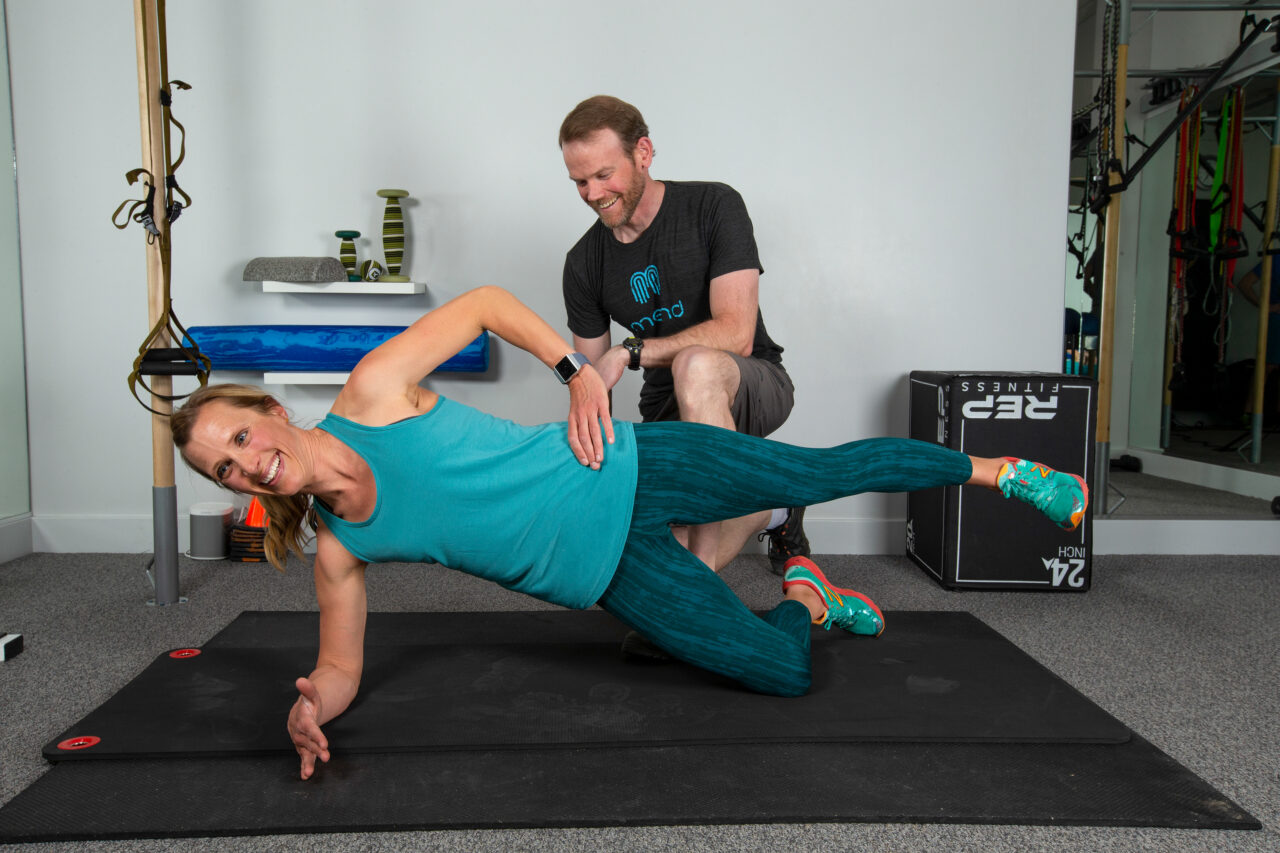By: Rani Helvey-Byers, PT, DPT, OCS
If you’ve been doing all the right glute focused exercises but still feel like your glutes just aren’t firing, you’re not alone. Many people struggle to feel their glutes working during common exercises such as squats, lunges, and deadlifts.
But there’s good news: a recent study found that static hold exercises, also known as isometrics, may translate to greater neuromuscular recruitment of your glutes during strength training. In other words, activating your glutes with isometric exercises can help your body utilize them more effectively during your workouts!
🔍 What the Study Found
In a 2022 study published in the Journal of Electromyography and Kinesiology, researchers measured the recruitment of the gluteus maximus muscle before and after one week of targeted isometric training.
Participants followed a bi-daily routine of three isometric glute exercises using resistance bands. Participants held each exercise for the duration of one minute, and repeated each exercise for three sets.
The results? Glute activation increased by 57% during double-leg and 53% during single-leg squats.
💪 The Exercises (And How to Make Them Harder)
According to the study, each of the following exercises was held for one minute and repeated three times per side. Exercises were repeated twice daily every day for one week. We recommend taking rest days as needed. If holding for one minute is too challenging, hold for as long as you’re able to and rest when necessary.
1. Clamshell Hold (With Side Plank Variation)
How to do it:
Lie on your side with hips and knees bent (knees stacked, heels together).
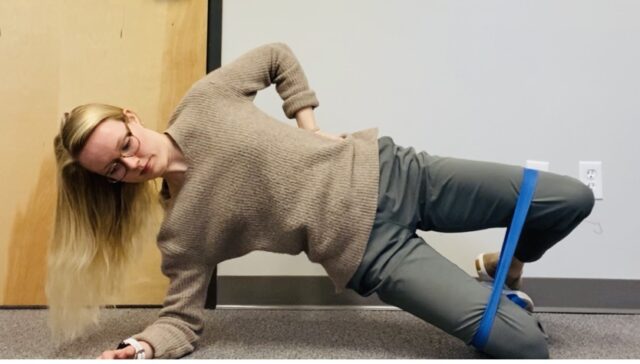 sideplank with clamshell
sideplank with clamshell2. Side Lying Hip Abduction Hold (With Side Plank Variation)
How to do it:
Lie on your side with your bottom leg bent and your top leg straight and stacked.
Lift your top leg about 12–18 inches off the bottom one, keeping it in line with your body.
Don’t let your toes rotate upward—keep the foot neutral or slightly down.
Keeping your feet touching, lift your top knee as high as you can without moving your pelvis or rotating your trunk.
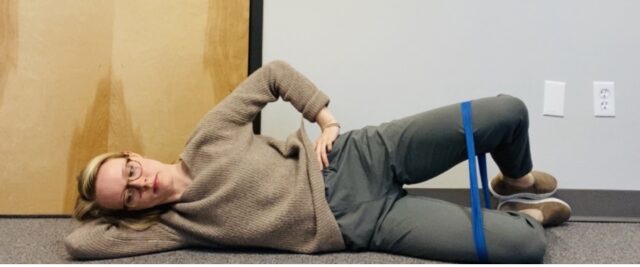 Clamshell holdSide Plank Variation (To Increase Challenge) – Set up in a modified side plank (on your forearm and bottom knee with your hips lifted) and perform the clamshell.
Clamshell holdSide Plank Variation (To Increase Challenge) – Set up in a modified side plank (on your forearm and bottom knee with your hips lifted) and perform the clamshell.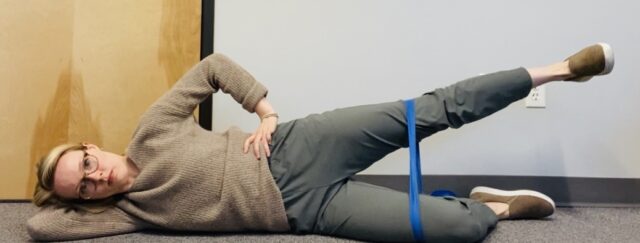 Sidelying hip abduction with band
Sidelying hip abduction with bandSide Plank Variation (To Increase Challenge) – Perform this from a modified side plank position.
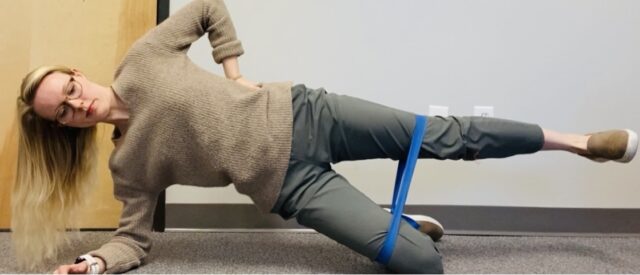 Side Plank Hip Abduction
Side Plank Hip Abduction3. Donkey Kick Isometric Hold (With Front Plank Variation)
How to do it:
Start on hands and knees in tabletop position.
Keeping your knee bent at 90°, lift one leg behind you, driving your heel toward the ceiling.
Keep the core engaged and avoid letting your back arch.
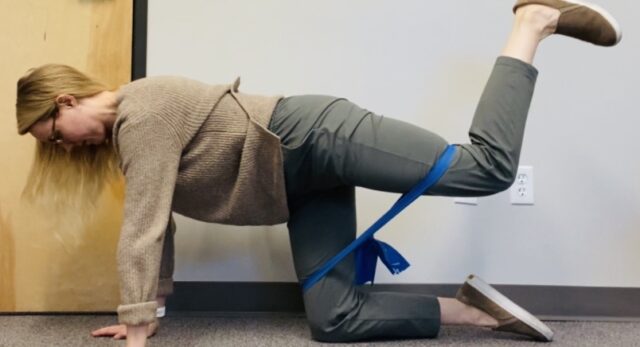
Donkey Kick Exercise Front Plank Variation (To Increase Challenge) – Perform this from a plank position and lift one leg off the ground, keeping the leg straight. Note, ensure you maintain adequate core control and do not let your low back sag. 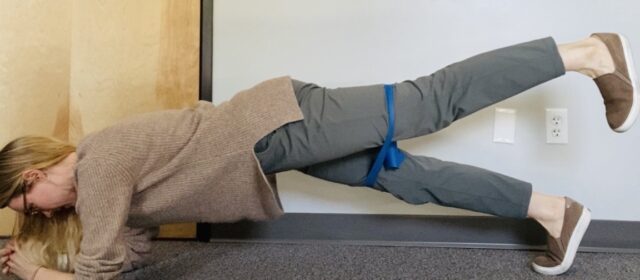 Front Plank With Hip Extension
Front Plank With Hip ExtensionInterested in other ways to strengthen your glutes? Check out this blog post on the best exercises for gluteus maximus: https://www.mendcolorado.com/physical-therapy-blog/2023/4/4/what-are-the-best-exercises-for-gluteus-maximus/
Reference:
Cannon J, Weithman BA, Powers CM. Activation training facilitates gluteus maximus recruitment during weight-bearing strengthening exercises. Journal of Electromyography and Kinesiology. 2022;63:102643. doi:10.1016/j.jelekin.2022.102643

